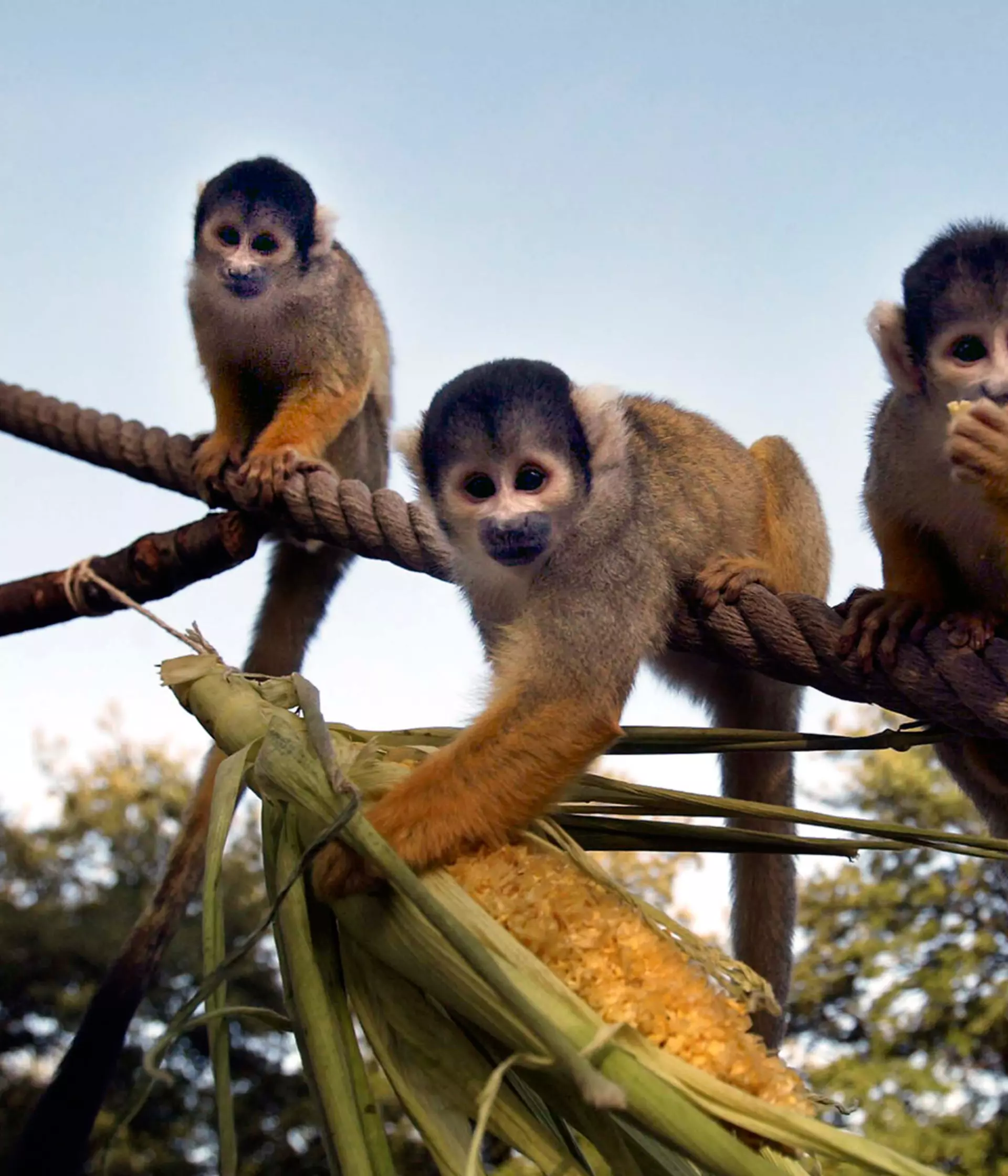Black-capped squirrel monkey facts
- The squirrel monkeys are the New World monkeys of the genus Saimiri. They are the only genus in the subfamily Saimirinae.
- Squirrel monkeys grow to 25 to 35 cm, plus a 35 to 42 cm tail. They weigh 750 to 1100g. Remarkably, the brain mass to body mass ratio for squirrel monkeys is 1:17, which gives them the largest brain, proportionately, of all the primates.
- Unlike the other New World monkeys, their tail is not used for climbing, but as a kind of "balancing pole" and also as a tool. Their movements in the branches are extremely speedy.
- They live together in multi-male/multi-female groups with up to 500 members. These large groups can, however, occasionally break into smaller troops.
- They have a number of vocal calls, including warning sounds to protect themselves from large falcons, which are a natural threat to them. Their small body size also makes them susceptible to predators such as snakes and felids.
- The mating of the squirrel monkeys is subject to seasonal influences. Females give birth to young during the rainy season, after a 150- to 170-day gestations.
What do squirrel monkeys look like?
Squirrel monkey fur is short and close, coloured olive at the shoulders and yellowish orange on its back and extremities. Their throat and the ears are white and their mouths are black. The upper part of their head is hairy. This black and white face gives them their German name, 'skull monkeys'.
What do squirrel monkeys eat?
Mainly insects, topped up with fruit and seeds.
Squirrel monkey habitat
Rainforest, spending the majority of their time in the canopy occasionally scavenging on the forest floor.
Squirrel monkey threats
Small monkeys like these are a tasty treat for larger carnivores, so they seek safety by living in troops. The squirrel monkey’s status in the wild is threatened from use in biomedical research and as pets, bait and food. The pet trade is becoming an bigger problem for primates as a result of social media, you can help stop this by not liking or following primate pet posts.
Currently London Zoo, along with other zoos in England, is involved in breeding programmes aimed at increasing numbers of this primate species. Our squirrel monkeys are part of the European Endangered Species Programme.
Be transported to the lush mountainous forest of Central Africa, against the backdrop of a 30ft waterfall and peaceful lagoon, be one of the first to step into Monkey Valley and experience our troop of gravity-defying, 'high-flying' colobus monkeys leaping, lounging, swinging, and snoozing, in their new tree-top inspired habitat.
